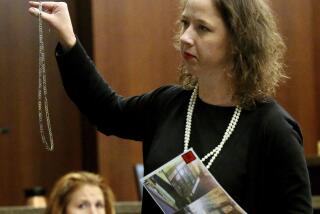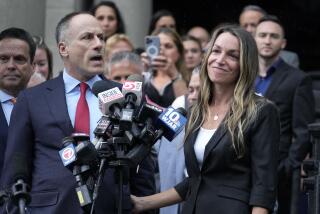Baltimore officer’s mistrial might not hurt prosecutors in Freddie Gray case

The deadlocked jury in Officer William G. Porter’s trial raised questions last week about prosecutors’ approach to the case, but research on hung juries suggests that the mistrial will not hurt their chances of convicting him in the death of Freddie Gray.
When juries cannot reach a unanimous verdict and prosecutors retry the case before another jury, they win about 70% of the time, researchers at the National Center for State Courts found — the same percentage for a first trial.
Baltimore prosecutors face a number of crucial strategic decisions in the coming days, including the possibility of offering a plea deal to Porter, as they seek to use him as a witness in cases against five other officers.
But many lawyers expect Porter to face a second trial. By then, prosecutors and defense attorneys will have carefully reviewed details of the trial that ended Wednesday to determine where they were effective and where they stumbled.
William H. “Billy” Murphy Jr., the Gray family’s attorney, said prosecutors should be able to go into a second trial prepared to more aggressively attack Porter, who testified in his own defense.
“They can recast their entire cross-examination of him,” Murphy said. “Now they have videotape of everything he said.”
Porter, 26, is charged with involuntary manslaughter, second-degree assault, misconduct in office and reckless endangerment in Gray’s arrest and death. He has maintained his innocence, as have the other officers charged in the case. The medical examiner concluded that Gray suffered a fatal spinal injury while being transported in a police van.
It is unclear why the jury in Porter’s case could not reach a verdict, or how many jurors favored acquittal or conviction on each charge. The judge handling the case ordered the jurors’ identities kept secret and did not release records of any votes the jurors might have taken. Lawyers in the case are subject to a gag order.
Researchers have examined why juries sometimes cannot agree. Although the Porter case is unusual because he is a police officer accused in a death, it also included factors — ambiguous evidence and complex legal questions — that can leave jurors in disagreement, according to the National Center for State Courts.
The case against Porter centered on his alleged failure to take action, an unusual focal point in a criminal case. Prosecutors said he did not follow Baltimore Police Department rules on placing seat belts on those arrested and seeking medical care if requested. Defense attorneys argued that Porter did not know how badly Gray was hurt and that he acted as other officers would reasonably have done. They also challenged crucial medical evidence.
The National Center for State Courts report, published in 2002, remains the most comprehensive study of hung juries, said Paula Hannaford-Agor, a jury researcher at the center and one of the study’s authors. Researchers gathered data about hung juries from 30 court systems and then scrutinized about 400 cases in Washington, New York, Los Angeles and Phoenix to figure out why a trial ends in a hung jury.
Jury deliberations are secret, so the research team spent months gathering survey responses from jurors as cases ended in an attempt to piece together why they were unable to agree.
Researchers found that it was rare for juries to deadlock. For every 10,000 felony cases in the courts they studied, just 16 ended in a hung jury, the researchers found. That is partly because the vast majority of cases end with guilty pleas, but even among cases that go to trial, only 6% end in deadlock.
Nine of the 30 counties had information on what happened after a mistrial was declared because of a hung jury. Researchers reported that in a third of those cases, the defendant underwent a second jury trial; a few others were retried before a judge. In the remaining cases, charges were dismissed, the defendant pleaded guilty or the result was unclear from court records.
Amy Dillard, a professor at the University of Baltimore School of Law, said the idea of demanding a unanimous verdict is centuries old.
“Unanimity gave the assurance in criminal cases of proof beyond a reasonable doubt and the jury was speaking the mind of the populace at large,” she said.
Porter’s attorneys have questioned whether he could get a fair trial in Baltimore if jurors feared that voting to acquit would trigger rioting like that seen in the city in April. Baltimore Circuit Judge Barry G. Williams determined after quizzing jurors that they could be impartial, but the issue could surface again before a retrial.
Dillard pointed to one of the more famous fictional accounts of jury deliberations as a reminder of how seriously jurors usually take their task.
“When you look at something like ’12 Angry Men,’ what you see in that is the holdout for not guilty ultimately over time turns the tide,” she said. “The idea is that the people who are holding out are holding out for a reason, not because of a bias or hardheadedness or a personality disorder.”
Twitter: @iduncan
More to Read
Sign up for Essential California
The most important California stories and recommendations in your inbox every morning.
You may occasionally receive promotional content from the Los Angeles Times.











